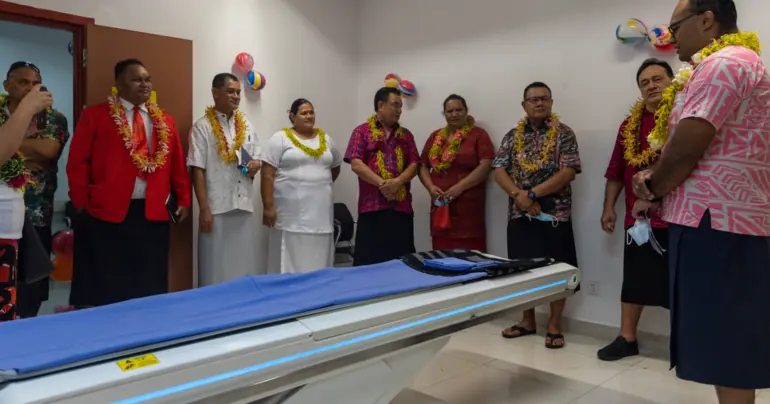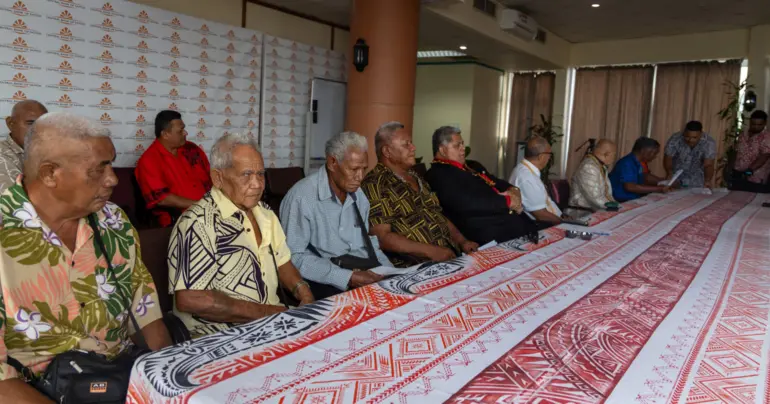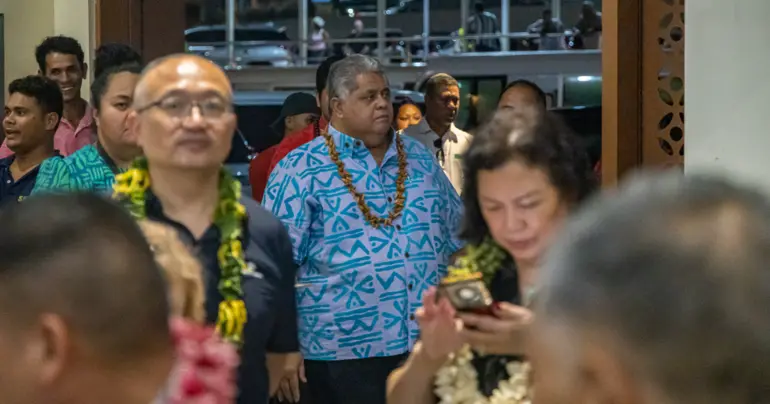Recovery plan details needed
It seems that Samoa has looked on this month while many of our neighbours have been unveiling plans to reopen and revive their economies.
In one of the world’s most remarkable examples of a turnaround in the tortuous saga of this pandemic, Fiji this week announced plans to open its borders.
Prime Minister Frank Bainimarama said the country would reopen its borders to a select number of countries, including Australia, the United States and New Zealand, from 11 November.
The first Fiji Airways tourist flight is scheduled for December 1, with Australian carriers Qantas and Virgin Australia resuming flights later that month.
We do not have to cast our minds back far to recall when, in June, Fiji was suffering from what was then the world’s worst per-capita infection rate for the COVID-19 virus.
Government initiatives such as refusing to allow employment to the unvaccinated and even cash incentives have produced a remarkable national change in fortunes.
More than 95 per cent of eligible Fijians over the age of 18 have now received their first jab, and 80 per cent are now fully vaccinated, according to estimates from the University of Queensland.
That is a truly remarkable turnaround, for which the nation’s health authorities, who suffered their share of criticism at the peak of the crisis, deserve praise.
But our neighbour, while perhaps unique in its redemption narrative, is hardly alone in examples of Governments in the region that appear to be making things happen; striking a blow back against the virus that has done so much to injure our livelihoods.
Australia, one of the countries in the region, which had hewed most closely to a policy of fortress protection also announced a change of tack on its restrictions on in-bound passengers.
In an initiative designed to “take our lives back”, the country’s Prime Minister Scott Morrison announced it would be fast tracking previously heavily restricted international travel, both in and outbound.
Where travellers had been limited to Government-mandated hotel rooms, the supply of which was extremely limited when compared to the demand for Australians to return home, local media now reports that fully vaccinated passengers will be allowed to home-quarantine from as early as next month.
New Zealand - our biggest transport connection hub - similarly, has changed its thinking and adopted a new plan, with the country's Health Minister, Chris Hipkins, openly engaging the public while doing so.
The country's Government has junked a philosophy based on the total eradication of no COVID-19 cases.
Instead, the virus is now being couched as something with which the countries citizens are all going to have to learn to live. Its Minister of Health, Chris Hipkins has acknowledged that a policy that aims for zero COVID-19 cases are a thing of the past.
With a view to slowly ramping up its opening over its forthcoming Summer, the country is using self-isolation at home pilot programmes as an alternative approach to a national qurantine system that has simply been overwhelmed.
Such an approach would mean living with the fact that there will always be some degree of risk posed to the public by the virus. But new data showing only a tiny fraction of the country's active cases include those who have been vaccinated. To offset this risk as much as possible the country is undergoing a massive push for people to get vaccinated this weekend in what has been dubbed as a "Super Saturday" effort.
Our neighbours' new policy stances will result in a massive influx of flights: both from foreign nationals who had long been stranded overseas and international tourists whose demand for travel has been pentup since the pandemic in March last year.
The region's change of thinking is hardly localised. Farther afield in Asia Singapore, Malaysia and the tourist meccas of Bali in Indonesia and Thailand have flagged to international tourists that they expect the vaccinated to be welcomed within their borders by year’s end.
Much of Europe and America are already open to the eligible.
All of which begs a question: what is Samoa’s plan for reopening to the outside world and how far on track are we?
There is a very real reason for asking such questions. While the health of the nation should be our primary concern, there is also a significant first mover advantage to be had for those nations who (safely) move to open up.
Last we were told by the Government it would consider opening borders only once 98 per cent of the eligible population had received its vaccinations.
Despite recent drastic action we are a long way off achieving that ambitious goal.
With 94 per cent (more than 115,000) of the population having received its first dose of the AstraZeneca vaccine we have made admirable progress.
But last month’s vaccination lockdown was an attempt to arrest a yawning gap between those who had received their first and second doses, a figure that then stood at more than 50,000.
With 60 per cent of the population now fully vaccinated that figure has declined, but only to the point at which the gap is a little less than 45,000.
What is more, there is a ticking clock. With the nation’s vaccine stockpile set to expire within a month action is needed now.
We do not fault the Ministry of Health or its workers who, during the recent two-day shutdown, worked tirelessly to attempt to reach each and every single Samoan.
But we do call upon the Government to give the nation - and especially business - a sense of certainty, after having hung on for so long despite suffering an economic battering. Certainty is essential to business confidence and our ability to wait out whatever yet may come to pass.
What is the plan for addressing and reaching the missing 45,000 that we need? Perhaps we should revisit the 98 per cent target set by the Government and ask if it is achievable; and if so, what is preventing us from reaching this final 35 per cent?
Australian states have set themselves more achievable targets of vaccinating 80 per cent of their eligible populations before opening up. Is there a reason ours should be so much more stringent?
We do not have the medical answers to these questions, nor do we claim to. But one thing do believe the country is owed is a transparent discussion and acknowledgment of these problems.
The economy has dealt with uncertainty for so long; now that those around us are opening up we believe the very least we are owed are details.










